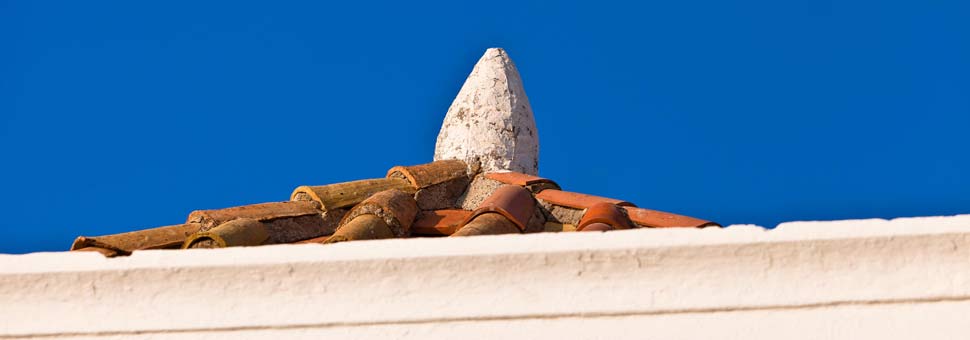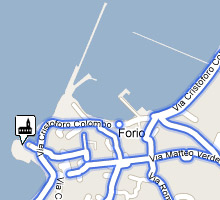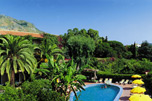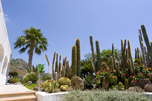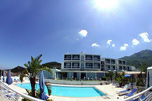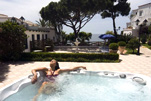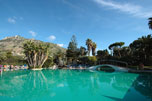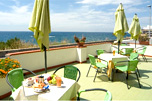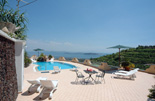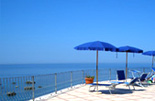Description
The Church of Soccorso, a unique example of local architecture, situated in a particularly impressive and spectacular position, on a promontory overlooking the sea from which it takes the name of the ‘punta del Soccorso’. The church is preceded by a typical churchyard surrounded by a double flight of stairs distributed in a semicircle and decorated with polychrome majolica tiles. The churchyard extends to a terrace with typical stone seats running around the church at the center of the terrace where stands a stone cross, whose base is covered with majolica tiles. In the middle of the churchyard, in front of the portal protrudes, stands a landing where the semi-elliptical-shaped parapet is decorated with tiles depicting religious subjects and floral motifs. The original façade offers a mix of Gothic, Renaissance, Baroque style. Above follows the curvature of the barrel vault of the nave, the center is surmounted by a cross with base-inspired baroque cartouches on each side ends with only sketchy, also an expression of a rustic Baroque Oriental. On the left stands the small tower with a pyramidal spire in Gothic style. The white facade is broken only by the Renaissance portal gray stone since the first half of the seventeenth century. Above which opens an oculus. The side walls have an asymmetrical set of buttresses, domes, small square windows, rectangular, circular and oval. The interior is extremely simple: the plant is a basilica, there is a single nave with three side chapels, the larger is the chapel of the Crucifix, on the left side, covered by vaults and enclosed by a balustrade marble and iron railing. The most interesting aspect is given by the succession of different types of vaults: the first section followed by a barrel vault and the bottom of the dome with spherical pendentives, lighted by four windows, bull's eye. The floor of the apse is covered with ceramic tiles. The only other decorations are Corinthian pilasters and cornices of the underlying models of sailing ships, votive offerings of sailors. Even in the sacristy are preserved some paintings of shipwrecks made a vow to perform or be sailors survived storms at sea. Known as the Church of Santa Maria della Neve.Historical info
The church was part of the rescue of an old Augustinian monastery founded in the fourteenth century. Historical information on the monastery of the Hermits of St. Augustine derived from the prior report, dated back to April 2, 1650, preserved in general of the Augustinian Hermits in Rome. The report was compiled following the bull “Inter caetera” in 1649, with which Pope Innocent X, convinced of having to remove the small convents, ordered all the monks to produce a complete list of movable and immovable property of the convents, with the related income and expenses. It is said that the monastery was built about 300 years before, so it is possible to attributes to the foundation in 1350. At that time the Augustinians already owned the convent of S. Maria della Scala, the present cathedral of Ischia. Since the beginning of the fourteenth century on the island, they exercised a real dominion over the entire island territory, thanks to generous donations and many of the lords of the island. The brothers introduced the devotion to St. And St. Augustine Nicholas of Tolentino and built several small convents received on land: until the middle of the '600 had been founded near the church of St. Sebastian in Barano, Forio and to that of the Church of St. Gennaro in Panza. The monastery was built far from the center of the rescue, at a time when the village of Forio, the original settlement on the hill around the church of S. Vito, was developing and spreading towards the sea. The report of 1650 is the first documentation of the convent and the church. It shows that the brothers owned land around the monastery, not suitable because exposed to wind and storms, and these lands over the centuries have undergone a process of erosion, so the church has remained above the sea. The report also found a description of the church and the convent, “is a beautiful structure, new majority, the remaining old part containing two beautiful courtyards, six cells, as well as rooms for wine, wood, kitchen, and any other need with a wonderful large room to use, and a perfect walled garden "(cf. Di Lustro, 1974). In 1649 the management of the convent was in trouble because of debt incurred for special expenses during the war of the People (presumably the revolt of Masaniello of 1647) and famine. The Hermits left the convent in 1651 and the church was entrusted to the diocesan bishop. The convent was then abolished in 1653 after the bull “instauratae disciplinae regularis” of Innocent X, who established the effective abolition of small monasteries, the building came under the jurisdiction of the University of Forio. The Soccorso church has undergone many transformations over the centuries. The original nucleus was very simple, it included only the nave and the apse. In 1791 it was made the chapel of the Crucifix and in 1854 and a soaring dome, as documented by some drawings made in the nineteenth century (Vianelli, Duclair, Ledoux). The dome collapsed during the earthquake of 1883, was rebuilt of more modest proportions. In 1740 on the roof was built a chapel dedicated to Our Lady of Grace, still existing in the late nineteenth century, as is evident from an engraving by Louis Charles Ledoux (cf. Di Lustro, 1983; Sardella, 1985, fig. p. 192). From 1781 the church became the seat of the congregation of young St. Louis, founded in 1754 by a priest of the Congregation of the Missionaries of the Neapolitan school of Massimo fathers of the Society of Jesus, with the aim to offer a spiritual and moral training for young people between 13 and 20 years of age. Il promontory on which stands the church was strengthened and saved from the erosion of the sea with gray stone pillars that highlight the white mass of the building, creating a striking color contrast. The church was recently restored and renovated, in some places, such as pillars and the ceiling of the dome, have been left to view the original structures. At least until 1985, year of completion of the card catalog of the Superintendence of Naples, were kept in the sacristy numerous works, including a tub of gray stone dating from the fifteenth century decorated with two griffins in the front face (see Monti, 1980, pp. 645-646, fig. No. 176 p. 646: in the IX-X cent.) and a table in a poor state of preservation showing the way to Calvary, performed in 1554 on behalf of a certain Bernardino Migliaccio. The table listed as a work of an unknown Neapolitan painter tied to the ways of the painter Francesco Roviale of Spanish origin, has been attributed to Marco Pino de Castris, considered one of the first works by the Tuscan artist during his long Neapolitan stay. (A. Della Ragione, 2005).Info
Address: Via Soccorso
City Hall: 80075 - Forio
Foundation Age: XIV cent.
Date: 1350 ca.
Holy Masses hours: August - September at 20.00
Priest: Canon Michele Romano
Bus lines: 1 - 14 - 2 - CD - CS
Objets d'art
Frescos
- Storie della vita di S. Antonio da Padova e della Vergine, S. Caterina, S. Lucia unknown author
- Paliotti d'altare con motivi floreali e fogliacei autore ignoto
- Frammento di tavola dipinta con ritratto di committenti e scritta dedicatoria unknown author
Canvas
- S. Agostino con S. Monica e S. Nicola da Tolentino dell' autore Calise Cesare
- Andata al Calvario, Pietà unknown author
- S. Giuseppe col Bambino unknown author
- Transito di S. Giuseppe unknown author
- Sogno di S. Giuseppe unknown author
- Purificazione unknown author
- Sacra Famiglia unknown author
sculptures
- Crocifisso unknown author
- Puttini unknown author
- Madonna del Soccorso by Picano Francesco
- Pila per acquasanta unknown author
squares
- Mattonelle maiolicate con motivi floreali e soggetti religiosi unknown author
floors
- Floor decorated with leafy and stars unknown author
Photo by: © www.ischia.it
Near to
Hotel Umberto a Mare
Porto di Forio
Belvedere del Soccorso
San Francesco di Assisi
San Gaetano
Arc. Maria SS. Visitapoveri
Santa Maria di Loreto
Oratorio dell' Assunta
Il Torrione
Il Torrione
Torre di C. Umberto
Galleria Eloart
Rist. Umberto a Mare
Rist. Die Stube
Rist. Il Saturnino
Rist. Pizz. Epomeo
Parch. Porto di Forio
Acc. dei Ragazzi
Cinema delle Vittorie
Giocatt. Cart. R2
Serpico Sapori
Farm. Dr. Migliaccio


